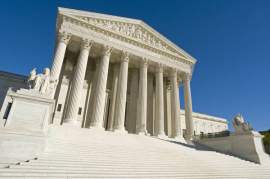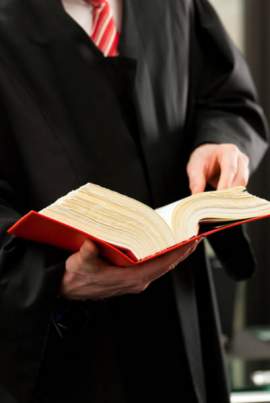
William Paterson

Popular In Supreme Court
How Many Supreme Court Justices Are There Justice Clarence Thomas Landmark Supreme Court Cases Supreme Court Building Us Supreme Court Docket Chief Justice John Roberts Hugo Black Justice Antonin Scalia Roger B Taney Supreme Court Justices Justice Elena Kagan Justice Sonia Sotomayor
Supreme Court Justice: William Paterson
William Paterson was a signer of the Constitution, New Jersey statesman and second governor, and an Associate Justice of the Supreme Court.Paterson was born in County Antrim in Northern Ireland, but moved to America when he was two years old. At the age of 14, William Paterson entered the College of New Jersey, which is now Princeton University. After graduating, Paterson studied law with Richard Stockton, a prominent lawyer, and in 1768, he was admitted to the barWilliam Paterson was nominated by George Washington for Associate Justice of the Supreme Court on February 27, 1793, but it was withdrawn when President Washington realized Article I, Section VI of the constitution prevented the nomination since Paterson was a current Senator. President Washington nominated William Paterson once more on March 4, 1793 to the Supreme Court, after Paterson’s term as Senator had ended. He was immediately confirmed by the Senate and served on the Court until his death on September 9, 1806.
Famous Cases
United States v. Richard Peters (1795): An early case in the United States Supreme Court which determined that the federal district court did not have jurisdiction over a foreign privateer when the ship that intended captured was not within the court’s jurisdiction. The Supreme Court could prohibit the district court from the proceeding in this case. Justice William Patterson joined the decision which held that the district courts did not have jurisdiction of a libel against a privateer for damages when commissioned by a foreign power for the capture of an American ship.
Talbot v. Janson (1795): A Supreme Court case where the opinion, including that of Justice William Paterson held that the court’s jurisdiction extended beyond the land and to the seas and that a United States citizen was also allowed to hold the citizenship of another country.
Hylton v. United States (1796): A U.S. Supreme Court case where the Court stated that a tax placed on carriages did not violate Article I, Section 9’s rule for the apportioning of direct taxes. The decision stated that the carriage tax was actually an excise tax instead of a direct tax, which required apportionment by population among the states. The Supreme Court also noted that a tax placed on land was a type of direct tax contemplated by the U.S. Constitution.
The case was significant because it was the first case heard Supreme Court that challenged the constitutionality of an act performed by of Congress. By holding up the tax, the Court exercised its power of judicial review, although the court refrained from overturning the statute. Rather than issuing a single opinion, the Justices issued their own analysis. Justice William Paterson, along with all the other justices except one agreed that the carriage tax was not a direct tax but an excise tax.
Calder v. Bull (1798): A Supreme Court case where the Court examined whether the court had the authority to review legislative decisions made by the state. The legislature of Connecticut demanded a new trial in a court regarding the contents of a will, which overruled the previous court ruling. In a unanimous decision by the Supreme Court which included Justice William Patterson, the Supreme Court held that the Connecticut legislature's actions were not in violation of the ex post facto law found in Constitution under Article I Section 10. This holding is still valid today and states that the ex post facto provision found in the Constitution applies only to criminal cases and not civil cases.
New York v. Connecticut (1799): A case heard by the Supreme Court that involved the State of New York and the State of Connecticut which came out of a land dispute between two private parties. This case with the first one where the Supreme Court exercised its power of original jurisdiction under Article III of the Constitution in order to hear the controversy between the two states. The land dispute involved a strip of land on the western border of New York bordering Pennsylvania which Connecticut claimed jurisdiction over and in turn granted the land to two private parties.
After New York granted certain parcels within the region to other private parties, the successors in title filed an action. The Court denied a motion to remove the suit from the Circuit Court, and New York then filed a bill in equity against the State of Connecticut. However, since the bill in equity was filed when the General Assembly of Connecticut was out of session, the state did not participate in the case. However, the claimants’ attorneys argued that no reasonable notice was given for the injunction to be allowed and that New York did not have an interest in the proceedings that deserved a stay. Justice William Paterson and the majority opinion of the Supreme Court found the notice to be sufficient, but denied the injunction, since New York lacked standing.
Marbury v. Madison (1803): A landmark case by the Supreme Court and in United States law, as well as for worldwide law. The case created the basis for the power of judicial review by the judicial branch in the United States under the Constitution, specifically under Article III. This case also demonstrated the first time in Western history where a court nullified a law by pronouncing it unconstitutional, a process which is now called judicial review. The decision helped create and define the checks and balances found in American Government. The case came out from a petition by William Marbury to the Supreme, who had been appointed as the Justice of Peace in the District of Columbia by President John Adams. However, the commission was not subsequently delivered to Marbury. Marbury then proceeded by asked the Supreme Court to force James Madison, the Secretary of State to deliver the documents. However, Justice William Paterson along with the Court and Chief Justice John Marshall denied the petition. Instead, the Court held that specific provision found in the Judiciary Act of 1789 which allowed William Marbury to bring forth his claim regarding the petition to the Supreme Court unconstitutional, because the act tried to extend the Supreme Court's original jurisdiction beyond the point which was established by Article III of the constitution.
NEXT: A Short Biography on Chief Justice John Roberts




















